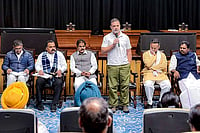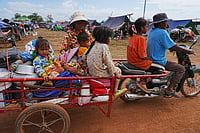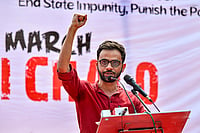In what experts are calling a deeply worrying shift in India’s public health landscape, a nationwide survey of nearly 300 cardiologists has revealed that heart disease—a condition once primarily associated with the elderly—is now afflicting younger Indians at an unprecedented rate.
According to the TATA AIG General Insurance Company’s survey released today, 74% of cardiologists report that a majority of their heart patients are under the age of 50. A closer look at the data reveals that 36% of doctors see most of their patients in the 31–40 age group, while 38% see them between 41–50 years—a marked departure from trends just a decade ago when 87% of cases involved patients above 41 years.
“This is not just a medical issue—it is a financial time-bomb,” warned Rajagopal Rudraraju, Senior Executive Vice President and National Head – Consumer Claims, TATA AIG. “The growing incidence among younger people means families are being caught off-guard—emotionally and economically.”
Over the past five years, the cost of cardiology treatments has surged by nearly 65%, underscoring the widening chasm between healthcare needs and affordability. The lack of financial preparedness, particularly in smaller towns, means treatment is often delayed—sometimes fatally—due to cost concerns.
More alarmingly, the survey found that 78% of doctors observed patients ignoring early warning signs—notably chest pain, breathlessness, and unexplained fatigue—which often leads to diagnosis only after significant cardiac damage has occurred.
Dr. Vashisth Das, senior cardiologist at Chinmaya Hrudayalaya, Bengaluru, who was not part of the study, expressed grave concern about the rising health crisis. “The biggest threat today is not age or genetics—it is our own lifestyle.” He pointed to modifiable risk factors such as unhealthy diets, tobacco use, sedentary behaviour, chronic stress, obesity, and excessive alcohol consumption as the leading culprits.
“We are seeing patients coming in late, after irreversible damage has been done. This is no longer a disease of the old. It's a disease of the overworked, overstressed, and under-informed,” he said.
The TATS AIG survey findings also shed light on gender disparities in cardiac care. While 34% of doctors acknowledged that women face equal cardiac risk, another 16% reported that women’s symptoms are often overlooked, leading to delayed or missed diagnoses. This aligns with global research showing that women’s cardiac symptoms—often atypical—tend to be under-recognised.
A significant concern raised by the study is the lack of access to advanced cardiac care beyond major urban centres. 39% of cardiologists reported that advanced treatments remain limited outside metros, while 59% said fewer than 40% of their patients are financially equipped to bear the cost of complex interventions.
India continues to bear a heavy cardiovascular burden. According to national data, cardiovascular diseases (CVDs) are the leading cause of death, with the majority of fatalities occurring in the 40–69 age group. The rising prevalence has mirrored a surge in demand for cardiac medications, which have increased by over 50% in the last five years, indicating both rising awareness and an escalating disease load.
Dr. Das called for urgent attention to preventive healthcare, particularly for the younger population. “We need to recognise that a strong family history, when coupled with poor lifestyle choices, significantly increases risk. What’s needed now is a nationwide push for preventive check-ups, health education, and greater awareness around insurance planning.”
In the absence of timely action—both at the individual and policy levels—India risks confronting a silent epidemic of heart disease that could overwhelm families, healthcare systems, and the economy alike.


























